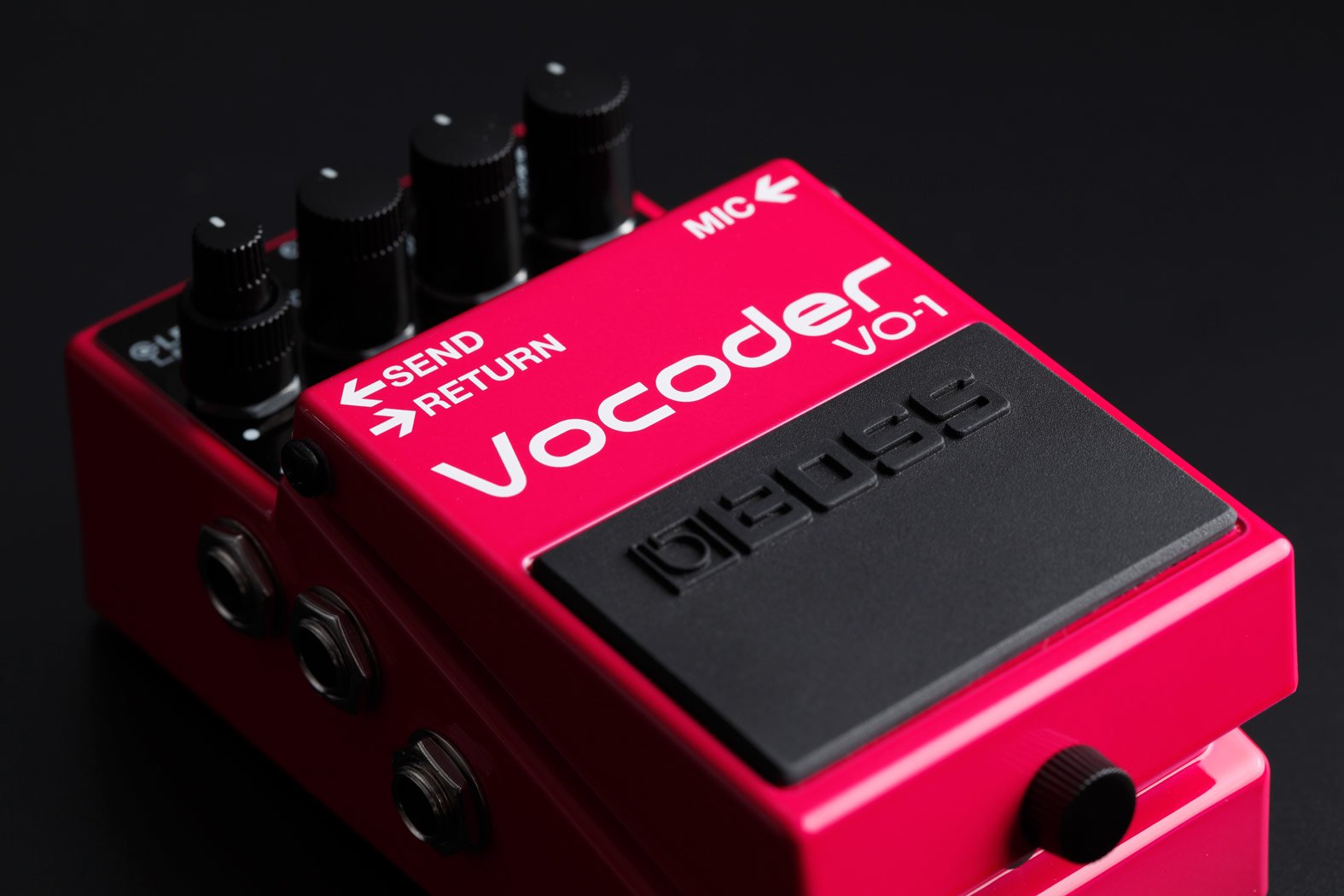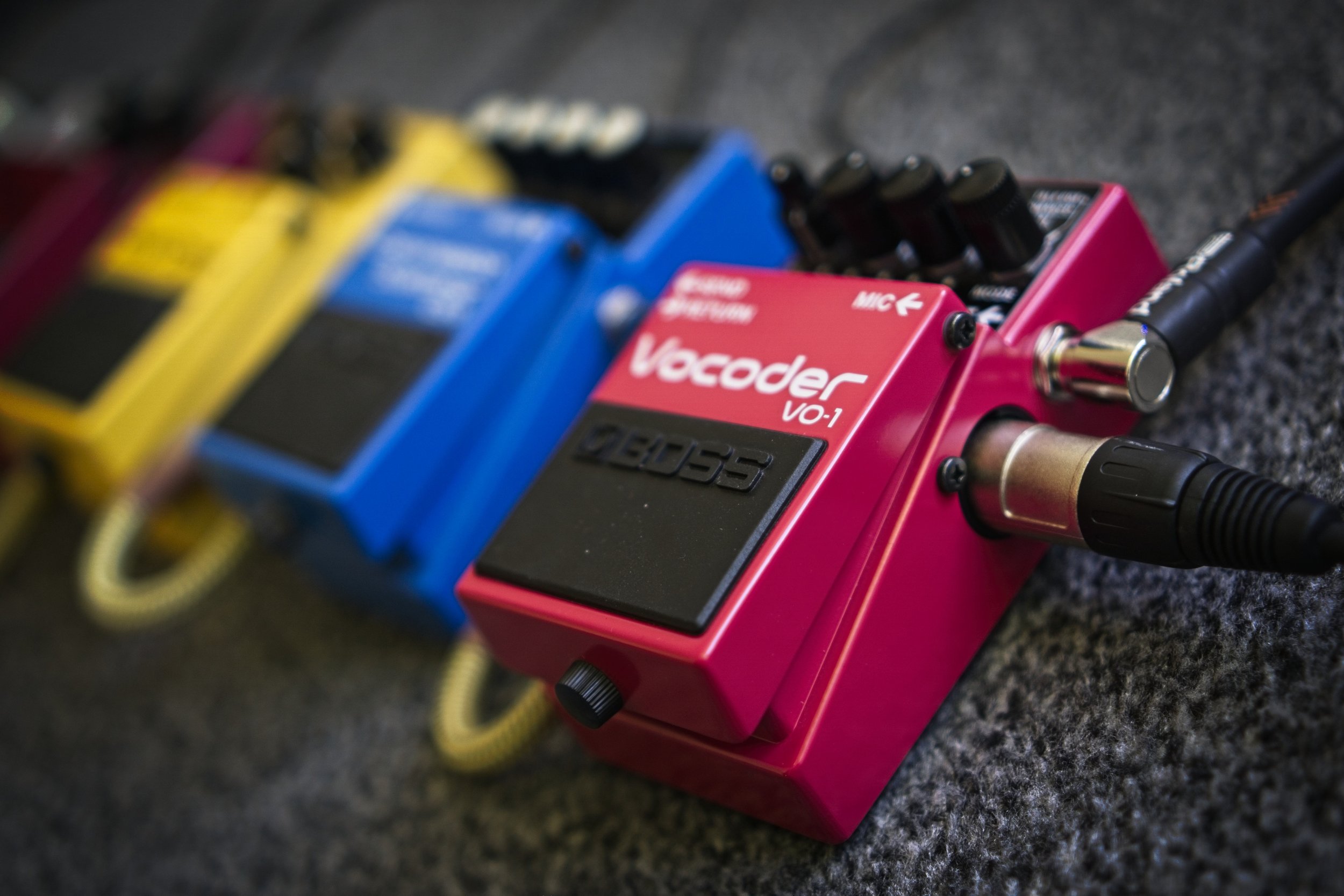Boss VO-1 Vocoder
A great alternative to a Talk Box.
£185 at thomann.de | £169 at andertons.co.uk
The VO-1 by Boss is a very unique pedal that combines vocoder, talk-box, and choir synthesiser effects into one unit. This pedal features advanced digital processing technology that allows it to transform the sound of any instrument into a human vocal effect.
The vocoder has 4 distinct modes – Choir, Vintage vocoder, Advanced vocoder and Talk Box. The Choir is the only mode that does not require connecting an XLR microphone to the pedal. The Level sets the overall level of the pedal, while the Blend control lets you mix in your dry signal. The Tone control lets you change the brightness of the effect. Color controls a different parameter, depending on the selected mode.
According to Boss, the Choir mode is supposed to automatically synthesize voices matching your playing pitch, adding spaciousness and depth. To me, it sounds more like a trumpet or a vintage fuzz pedal with lots of modulation. It does sound spacious and can be used to add atmosphere to a song. Overall though, I prefer using a fuzz pedal with lots of reverb and chorus. The Choir mode alone is definitely not enough to justify adding the VO-1 to your pedalboard.
The Vintage and Advanced are both vocoder effects. A vocoder works by analysing the sound from the microphone and applying its EQ curve to another signal, in this case, your guitar. This technology was initially designed by Bell Labs to send voice messages over large distances, but the sound quality was never good enough for the intended purpose. It was later adopted by musicians of all genres, commonly funk and hip-hop. The vocoder effect is very prominent in Daft Punk songs such as “Robot Rock” and “Harder, Better, Faster, Stronger”.
The Vintage mode is based on the early vocoder effects, while the Advanced mode brings more clarity to the vocals. The difference is not very pronounced and you might find that the Vintage mode offers more clarity, depending on your amp and effects setup. Color is supposed to range from a masculine to a more feminine voice. Generally brighter (both Tone and Color) will also sound clearer.
The Talk Box mode is the best innovation in this pedal. Typically a talk box works by putting a small amplifier speaker into a guitar pedal and playing your guitar signal from the speaker into a plastic tube that goes into your mouth. You then move your mouth and project the sound coming from the tube into a microphone. Then you can send the mic signal to a speaker or recording interface. Not very hygienic and a huge pain to set up and maintain. The VO-1 uses digital modelling to simulate this effect. The end result is extremely similar to a Talk Box with none of the mess. If you want to route the Talk Box effect directly to the PA or a different amplifier, you can. Just use the SEND output on the VO-1. This will split the wet and dry signals. The output jack will just send your dry signal to the rest of your pedalboard. Also, unlike with a regular Talk Box pedal, you have the option to send the effect blended with the dry signal to your amp. It sounds really cool through a distorted guitar amp. Think “Livin’ on a Prayer” by Bon Jovi. In Talk Box mode, the Color control sets the level of vocal distortion applied.
Another useful feature here is the effects loop. It lets you add additional effects to the wet signal while keeping your dry signal untouched. I like having an EQ pedal in there to have more control over the effect. Fuzz sounds really cool too when applied to the vocoder modes. On the top of the pedal is a mic sensitivity switch. You will likely want to set it to ‘high’ and switch to ‘low’ only if you are getting unwanted interference.
At £180, the VO-1 is not cheap, especially considering its niche applications. Unless you are in a funk or hip-hop band, it is unlikely you will want it on every song. You might also have to carry a microphone for it if the venue where you practise or gig does not provide one.
There is also the issue of learning to use it. It can take a lot of practice, especially if you are not a singer. You don’t need a good voice for it, but you do need to be able to sing while playing. This took me many hours of practice. Luckily you don’t need much lung capacity, as the VO-1 will capture whispering and inhaling too. To me, being able to play “Harder, Better, Faster, Stronger” with my band makes the VO-1 worth every penny. Used sparingly at the right moments the VO-1 can be just the tool you need to stand out from other bands and musicians. Have a look at this short YouTube video by Boss to hear it in action.
Bottom Line
Boss VO-1 is an excellent choice for guitarists and other musicians who are looking to add some unique and high-quality vocal effects to their music. Its range of different modes and voice-like sounds make it a versatile and powerful tool. The fact that you can use a microphone plugged into the pedal, instead of a plastic tube, is a game changer for the Talk Box effect.




